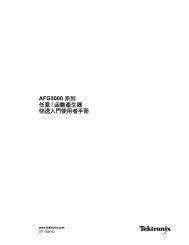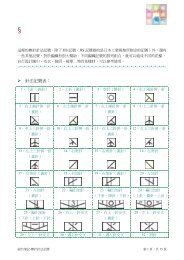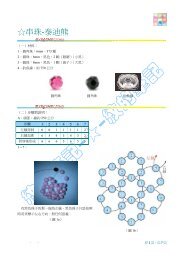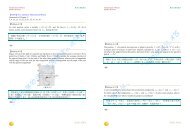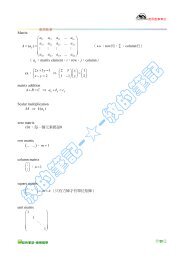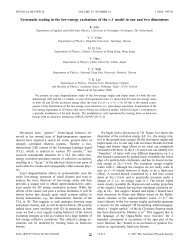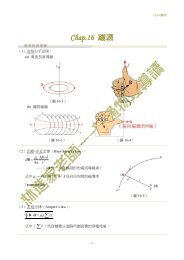Chapter 22 Materials Selection and Design Considerations
Chapter 22 Materials Selection and Design Considerations
Chapter 22 Materials Selection and Design Considerations
You also want an ePaper? Increase the reach of your titles
YUMPU automatically turns print PDFs into web optimized ePapers that Google loves.
W126 • <strong>Chapter</strong> <strong>22</strong> / <strong>Materials</strong> <strong>Selection</strong> <strong>and</strong> <strong>Design</strong> <strong>Considerations</strong><br />
The material used to encapsulate the package should:<br />
1. Be electrically insulating<br />
2. Be easily molded to the desired shape around the chip die <strong>and</strong> its wire leads<br />
3. Be highly impervious to the penetration of moisture <strong>and</strong> contaminants<br />
4. Be able to form strong adhesive bonds with the chip surface, wires, <strong>and</strong> other<br />
leadframe components<br />
5. Exhibit mechanical <strong>and</strong> chemical stability for the expected lifetime of the<br />
package<br />
6. Not require exposure to excessively high temperatures during installation<br />
7. Have a coefficient of thermal expansion similar to those of other package<br />
components to avoid thermal stresses capable of fracturing the wire leads<br />
Figure <strong>22</strong>.33 shows a schematic diagram of an encapsulated IC package.<br />
Both ceramic <strong>and</strong> polymeric materials are used to encapsulate IC packages; of<br />
course each of these material types has its own set of assets <strong>and</strong> liabilities. Ceramics<br />
are extremely resistant to moisture penetration <strong>and</strong> are chemically stable <strong>and</strong><br />
chemically inert. Glasses are the most commonly utilized ceramic materials. The<br />
principal disadvantage of glass is the requirement that it be heated to moderately<br />
high temperatures to lower its viscosity to the point where it will flow around <strong>and</strong><br />
make intimate contact with all of the wires that are microjoined to the chip surface.<br />
Some common glass constituents should be avoided (notably Na 2O <strong>and</strong> K 2O) since<br />
volatile cation species (Na � <strong>and</strong> K � ) may be emitted from the molten glass. These<br />
species are notorious in accelerating corrosion reactions, <strong>and</strong> the ions will degrade<br />
the chip performance.<br />
Polymeric materials are used in the largest volume for packaging encapsulation<br />
because they are not as costly as the ceramics, <strong>and</strong> they may be produced in a lowviscosity<br />
state at lower temperatures. Epoxies <strong>and</strong> polyurethanes are commonly<br />
used, with the former being the most common. However, these materials have a<br />
tendency to absorb water <strong>and</strong> do not form moisture-tight bonds with the lead wires.<br />
Some of these polymers require curing at a temperature on the order of 150�C, <strong>and</strong><br />
during cooling to room temperature will shrink more than other package components<br />
to which they are attached. This difference in amounts of contraction can give<br />
rise to mechanical strains of sufficient magnitude to damage the connecting wires<br />
as well as other electronic components. The addition of appropriate fillers (such as<br />
fine silica or alumina particles) to the polymer can alleviate this problem but often<br />
IC chip Encapsulation<br />
Connecting<br />
wire<br />
Encapsulation Leadframe<br />
Figure <strong>22</strong>.33 Schematic diagram<br />
showing an encapsulated IC<br />
leadframe package. [Adapted<br />
from Electronic <strong>Materials</strong><br />
H<strong>and</strong>book, Vol. 1. Packaging,<br />
C. A. Dostal (Editor), ASM<br />
International, 1989, p. 241.]



